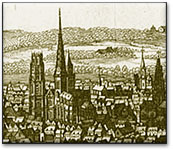Butter is the crème de la crème, the quintessence of the risen richness of milk itself, and as such has traditionally belonged to the exclusive category of "best" things: "top," "opulent," "pure" things. Even for cultures that almost never eat it, butter often achieves an aura of medicinal and cosmetic power. Among the butter-eaters, that minority of people who originate in the steppes and the cold north, it has always had regal status as a substance both unique and splendidly filling.
The lactose
Greeks, Arabs, and Near-Eastern Jews, whose cultures are resistant to raw milk, dislike drinking it in spite of a long dairying history. The indigenous millions of Oceania, the Americas, China, and Japan remain largely milk intolerant. Butter, cheese, yoghurt, arid soured milk like laban are all low in lactose because the fermenting bacteria use it up as fuel; these foods are therefore biologically acceptable by everybody, although non-milk-drinking people may eat them very seldom. Butter is more extravagant to make, and in its solid form more difficult to keep, than the other low-lactose milk products, and may therefore become a rarity and as such either precious or abominable, depending on the circumstances of the encounter with it.
|
|
In the oil-loving European south, butter, being expensive and relatively rare, tends to be perceived as a luxury. In the Middle Ages it was one of the foods banned during Lent. This was a minor inconvenience in the south where the normal cooking medium was olive or walnut oil; it was however a great hardship in the north, where butter was an everyday necessity. Clever southern businessmen cashed in on Lent by selling oil to the north during this time. The more cynical northerners would simply pay their way out of the ban—and the church used the money to build the "Butter Tower" of the Rouen Cathedral.
Not being allowed to eat butter especially enraged the idealistic Martin Luther. "For at Rome they themselves laugh at the fasts," he wrote in 1520, "making us foreigners eat the oil with which they would not grease their shoes, and afterwards selling us liberty to eat butter ...."
Norway
In medieval times, the king was due taxes at Yule time. Included in his demands were one spann of butter, or one bucket, from every household. In the days of Norway’s World War II barter economy, butter emerged as one of the most coveted “units of currency”. It played an important role on the table too, and as a decoration at celebrations and weddings, molded into large, lavishly decorated pyramidal sculptures. Traditional Norwegian butter molds are displayed today in a number of museums here and abroad.
United States
The definition and standards for butter in the U.S. was first set by congress in 1886. Current standards have not been changed since a statute to set the criterion was enacted into law on March 4, 1923. Butter grades are determined by classifying the flavor, then rating the body, color and salt characteristics. The resulting score translates into a grade B, A, or AA.
History
Butter divides the people of northern Europe as radically from the oil-loving southerners as beer and cider distinguish them from wine-drinkers. People from Mediterranean lands believed until at least the 18th century that butter was a cause of the leprosy which seemed to be so prevalent in the north. The Cardinal of Aragon took his own cook and plenty of olive oil when he visited Holland in 1516.
A Greek poem satirizing a Thracian wedding in the fourth century BC describes the guests as "butterophagous gentry" with unkempt hair. The two attributes amount to the same thing: untidy hair and butter-eating were equally outlandish. Greeks in their own estimation had better coiffeurs than anything available to Thracians; Greeks preferred olive oil to barbarous butter.
In Mexico a few years before the turn of the 20th century, native people were still placing cream in a bag, the whole taken behind the saddle of a spirited horse, and a tour of a few miles horseback undertaken by the rider. When the journey was at an end, the churning process was supposed to be finished.
Help grow this exhibit with your photos! WebExhibits helps connect people and cultures, and you can join in by sending photos of butter from your part of the world. Read more about sharing your photos.


